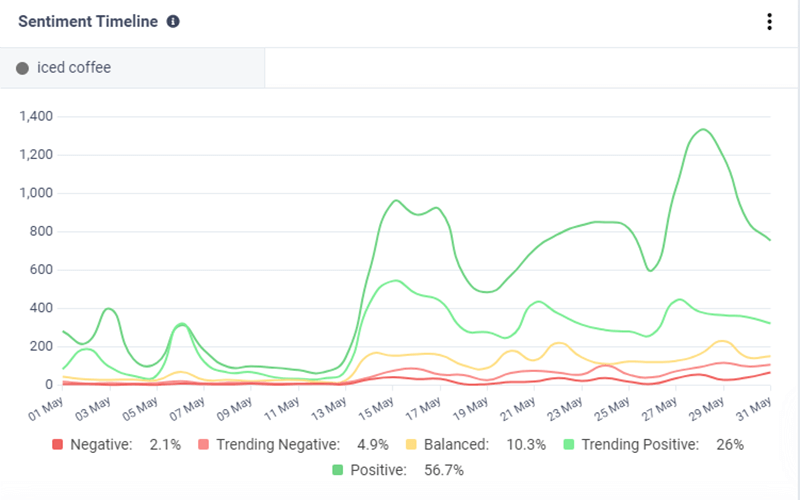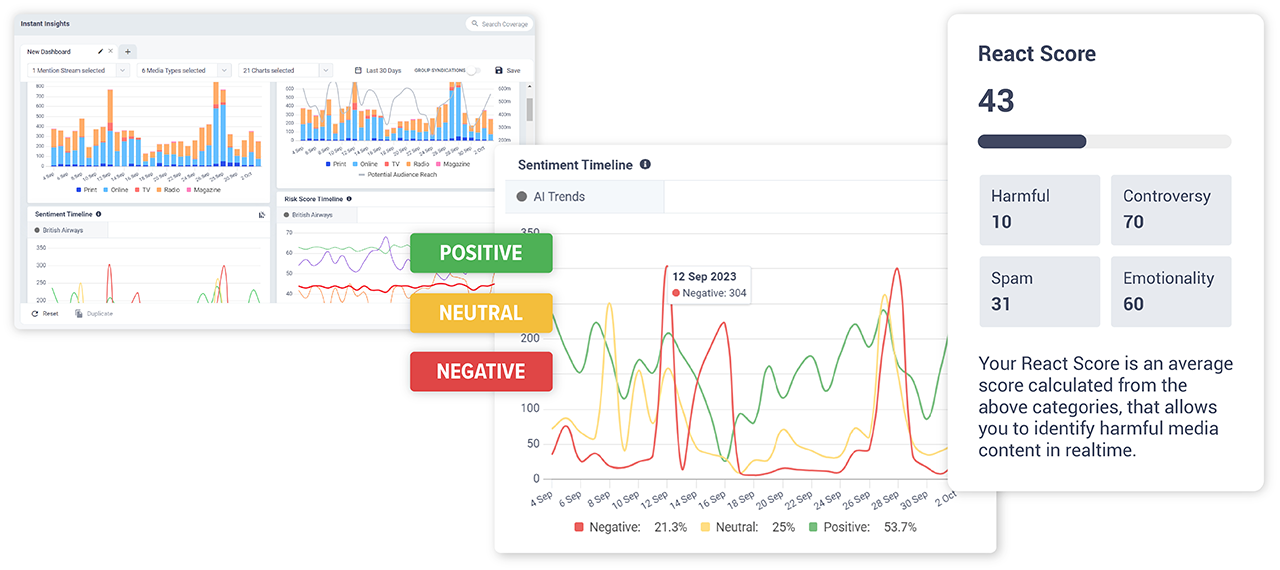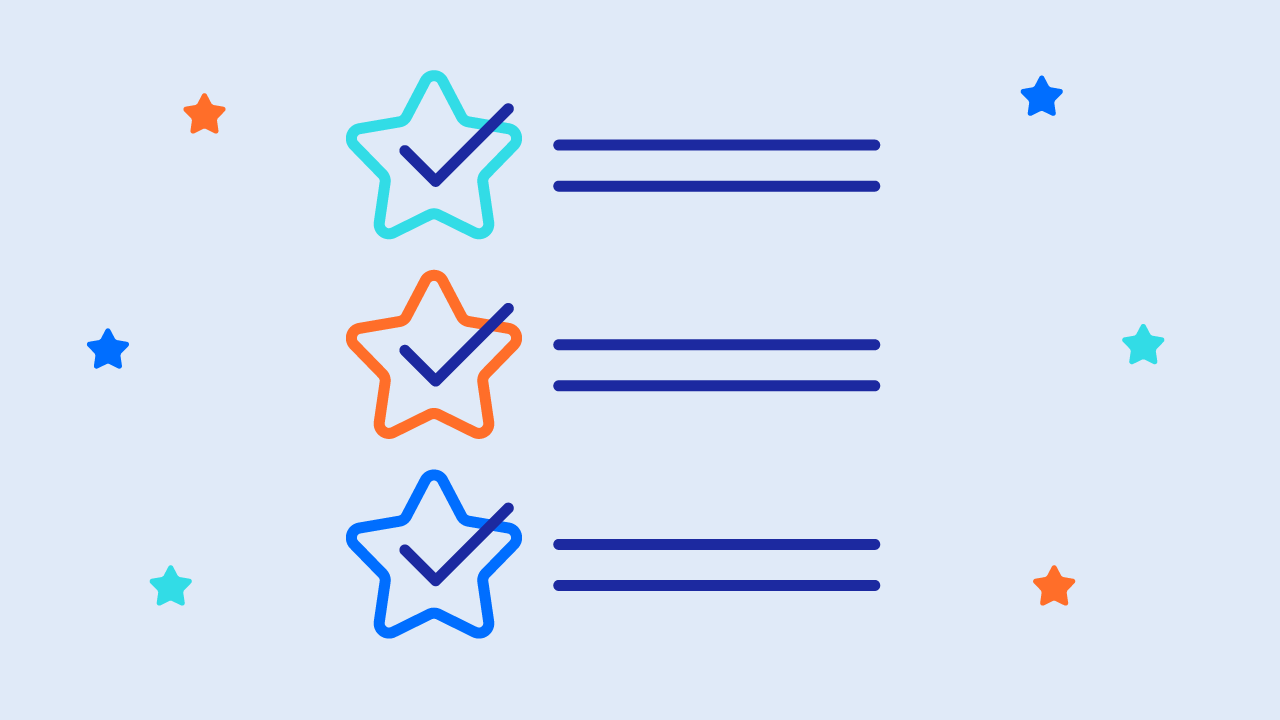If your brand, client, or organization is public facing, there’s a good chance they’re being talked about – whether online, through print or broadcasting channels, on social media, or all of the above. For public relations and corporate communication teams, who oversee brand management and reputation, tracking these conversations – and the potential implications on the brand – is a crucial element of the job. Public relations software and media monitoring tools can help you gather these brand mentions, but they don’t carry much meaning in isolation.
The real value comes from understanding brand sentiment - that is, the positive, negative, or neutral feelings associated with your brand when mentioned. By putting these conversations in context over time, it’s easier to paint a picture of an audience’s true feeling about your organization, products, or even competitors. To unlock this type of intel, you need to be making use of sentiment analysis.
What is Sentiment Analysis?
Sentiment analysis is the process of looking at text and determining the emotion behind the statements or opinions. From there, they can be classified as positive, negative, or neutral (or in some cases indicate if the overall conversation is trending in a positive or negative direction).
For PR professionals monitoring brand mentions, the volume of text data across online content, newspapers, magazines, and social media is incredibly vast. Instead of manually trawling through every mention, sentiment analysis gathers them all at scale to determine the author's views on a topic. This metric provides quick insight into how customers or target audiences perceive your brand, both for single mentions and over time.
Take the example below, which tracks mentions of the term “iced coffee” over a 30-day period through CisionOne. Around mid-May positive sentiment begins to climb to coincide with a popular restaurant chain announcing a summer menu deal.

Retrospectively, this shows the positive impact of a marketing and PR push, which the business will hope translates to an increase in iced coffee sales.
Is Artificial Intelligence (AI) Powering Sentiment Analysis?
The short answer is yes. Much has been written about AI and its impact on PR and comms since the arrival of generative tools like ChatGPT, but it’s been part of the industry for more than a decade through sentiment analysis.
In other words, if you’ve been using sentiment analysis, you’ve been using AI. Sentiment analysis tools deploy natural language processing (NLP) and machine technology learning to collect text data, process it, analyze it, then visualize it with a score or rating we can understand (e.g. positive, negative, or neutral).
AI does this at speed and scale, meaning thousands of media articles and social posts can be classified within seconds.
What Are the Benefits of Using Sentiment Analysis in PR?
There are various reasons PR teams may want to use sentiment analysis:
- Analyze coverage at scale: Sentiment analysis allows PR teams to quickly see the tone and emotional content of large volumes of media coverage and social media posts. This helps them get a comprehensive understanding of public perception without having to manually review each piece of content.
- Improve customer experience: By identifying negative sentiments from customers early, PR teams can address any issues promptly, and pass the feedback on to the customer service team, which they can use to make improvements to customer experience going forward. Being proactive helps maintain a positive brand image and improve overall customer satisfaction.
- Get brand and product insights: By analyzing sentiment across various traditional media and social channels, PR teams can uncover insights into how different aspects of their brand or products are perceived. This information can guide messaging strategies, overall brand positioning, and guide product development.
- Real-time response: Every PR team needs to be prepared for a crisis, and sentiment analysis is a vital tool in the crisis communications armory. Most sentiment analysis tools enable automatic alerts, so you can get notified of significant shifts in public opinion, identify and mitigate emerging issues, and prevent crises.
Sentiment Analysis Example
The below timeline looks at sentiment for Buzz Cola (an anonymized drinks brand). Positive and trending positive sentiment is falling, negative and trending negative is rising, and they briefly cross over before again changing direction.
The negative trends were quickly reversed (perhaps through strategic media outreach that resulted in positive coverage) and positive sentiment begins to climb again.

Another major benefit of sentiment analysis: Competitive intel. Outside of conducting sentiment analysis for your own brand, there’s also value in looking at how audiences talk about your competitors.
Sentiment analysis will provide insight into the competition, how similar products or services are faring in the market, and their relative strengths and weaknesses. For instance, spotting a rival brand experiencing positive sentiment may present an opportunity to launch a PR campaign of your own to shift the dial in your favor.
What Are the Limitations of Sentiment Analysis in PR?
Sentiment has been the go-to solution for audience analysis in PR for well over a decade, but it does have some flaws.
As humans, we’ve developed the skills to recognize sarcasm, irony, and ambiguity, but when sentiment analysis filters words through an algorithm, it not always sophisticated enough to pick up on the context in which they are chosen.
The meaning behind words can sometimes carry nuance, and defining them as positive, negative, or neutral may not be straightforward or tell the whole story. Take the below statements:
- “That TV show is so bad it’s good.”
- “This coffee tastes frighteningly good today.”
In the first statement, the phrase contains both "bad" and "good," typically opposing sentiments. The actual meaning implies enjoyment of the TV show despite its questionable quality, a nuance that basic sentiment analysis could miss. It may classify the entire statement as positive when it’s in fact ambiguous or neutral.
For the second statement, “frighteningly” might be associated with negativity, meaning that the “good” coffee may not be recognized by the sentiment model. A negative score could in turn be given to this positive statement incorrectly.
Despite these limitations, sentiment analysis remains a valuable tool for public relations professionals when used alongside sound human judgment. It can provide a snapshot of public opinion on a topic or brand – and highlight trends over time that may bring further insight.
5 Steps for Using Sentiment Analysis Effectively
Once you have the tools and resources in place to carry out sentiment analysis, it’s vital to set out a clear strategy to get the most out of it. Taking a five-step approach will give you guidelines and structure for tracking and improving how your brand is perceived.
1. Set Out Your Goals
Ask yourself what you want to achieve with sentiment analysis. Are you looking at brand reputation, campaign performance for a product launch, or are you tracking an emerging reputational issue? Setting a specific goal will guide your analysis and help measure success.
2. Identify Key Metrics and Benchmarks
Establish the metrics that are most relevant to your objectives. This might include shifting a sentiment score from neutral to positive, reducing negative mentions for a certain product or service, or demonstrating a sentiment trend over time. With these metrics in place, you should be able to benchmark future performance.
3. Set Up Comprehensive Media Monitoring
Look to media monitoring platforms to ensure you’re capturing a broad range of sentiments across relevant media (e.g. social media, print, online, podcasts). Use keywords and Boolean searches related to your brand and industry to ensure you’re getting thorough coverage and filtering out the noise.
4. Analyze Your Results
Keep reviewing sentiment data to look for patterns and trends, while linking them to any relevant external events or company actions. Remember, sentiment analysis has its limitations so use human insight to interpret nuanced or ambiguous earned media coverage.
5. Act on Insights
Use the insights gained to inform your PR strategy going forward. You should respond quickly to turn around negative sentiments and maintain and amplify positive ones. Your actions influence sentiment over time, so adjusting strategies will be required for continuous improvement.
Sentiment analysis is only one part of PR measurement, and is most effective when used as part of a broader strategy. By pairing it with your human expertise and qualitative research, it can be a valuable tool to understand how your brand is being talked about.
How Can Cision Help with Sentiment Analysis?
Sentiment analysis is baked into Cision’s all-in-one media monitoring platform CisionOne, with the ability to both track over time and see sentiment for individual pieces of media coverage (social media, online, print, broadcast, and podcast content) though mention streams.

CisionOne assigns five different ratings for sentiment:
- Positive
- Trending Positive
- Balanced
- Trending Negative
- Negative
This allows PR pros to more accurately pinpoint when the tide may be turning on media coverage and act quickly with this insight.
CisionOne also includes advanced features that can be used with sentiment analysis to dig deeper into the meaning and intent behind earned media mentions.
React Score uses AI to identify items by emotionality, controversy, or the likelihood of them being harmful or spam content. Paired with sentiment analysis, it gives greater insight into individual articles, social media posts, and broadcast segments linked with your brand.

Ready to start tracking your earned media with sentiment analysis? Find out how CisionOne can help by exploring the platform or making time to speak with one of our experts.








